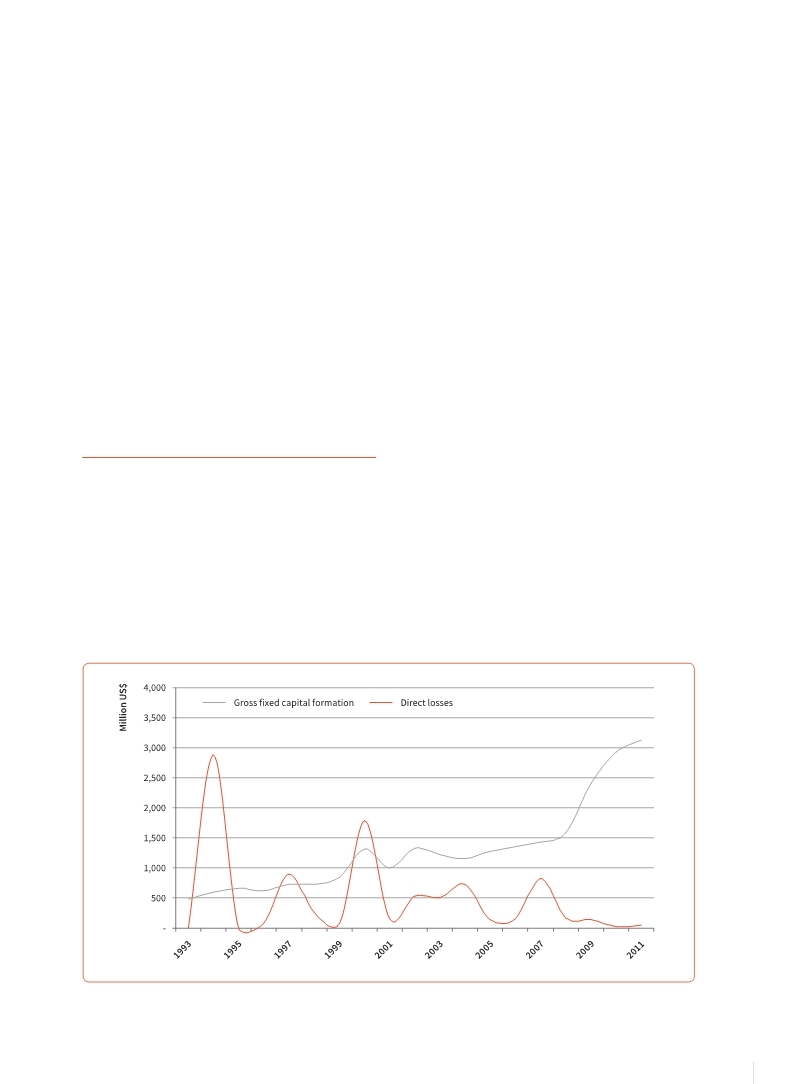
78
Part I - Chapter 5
5.1
Threats to economic resilience
Direct losses from major disasters trigger indirect losses and wider impacts that can challenge the macroeconomic stability of even high-income countries. A country wishing to promote its competitiveness and strengthen economic sustainability should recognise the potentially significant macroeconomic implications of disasters.
Risk refers to the probability of a given magnitude of loss in a given period of time. Resilience refers to the capacity of a country’s economy to absorb losses and recover. How quickly an economy recovers and how quickly a business recovers are clearly interrelated. But businesses are more likely to recover faster in a country where governments have the capacity to invest in recovery or where they have risk financing measures in place that cover most contingencies.
(Source: UNISDR, based on national disaster loss data bases, EMDAT and World Bank indicators)
Figure 5.1 Reported disaster losses and GFCF in Mozambique, 1993–2011
|


